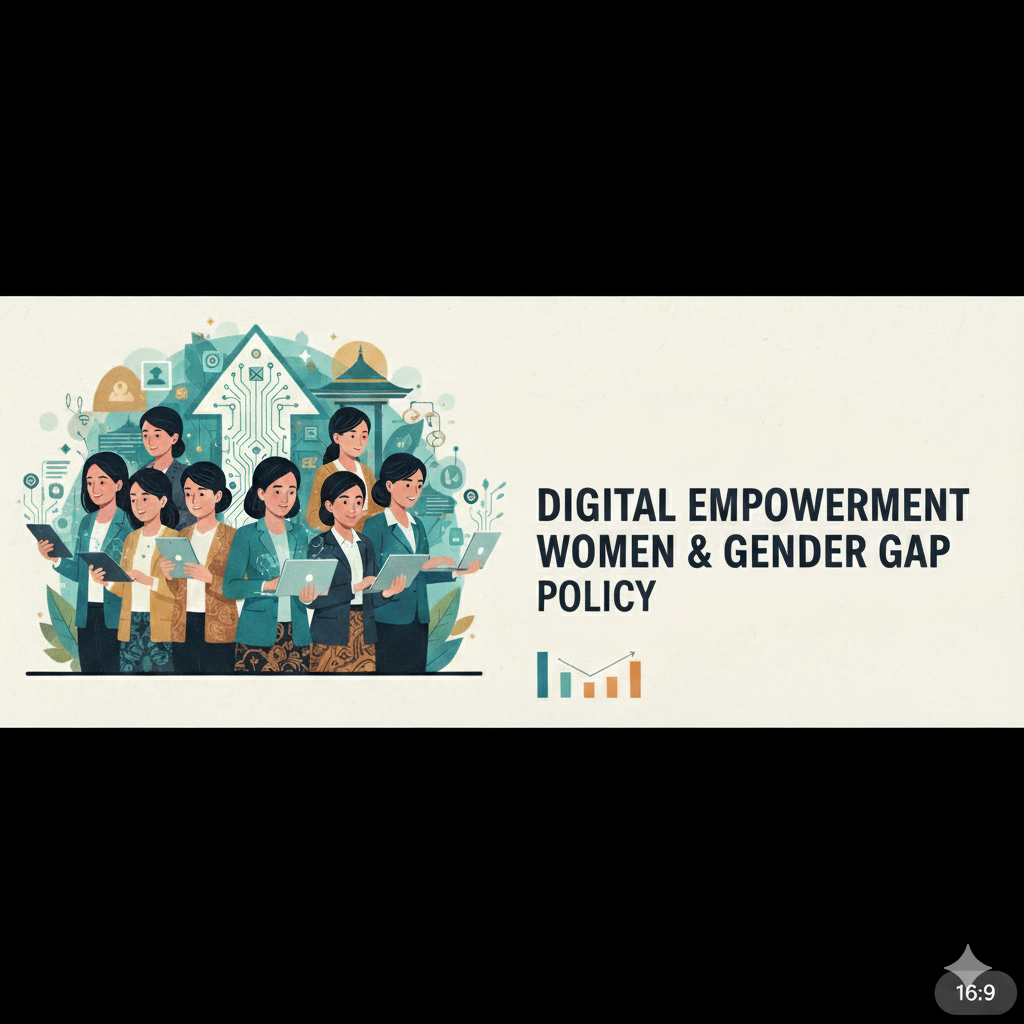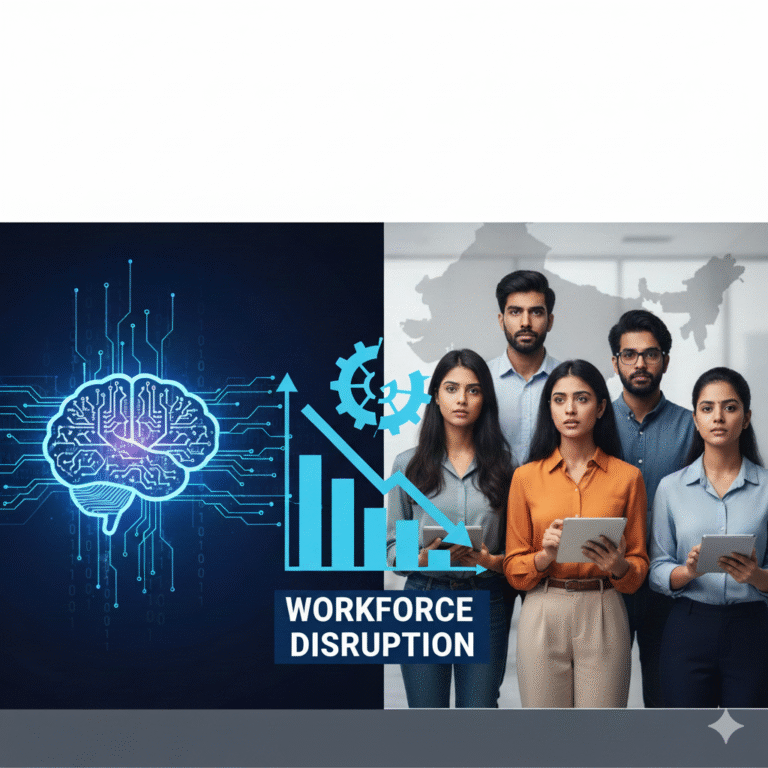
Key Highlights:
- Two-thirds of Indonesia’s 64.2 million MSMEs are women-owned with gender parity potentially adding $11 billion annually to GDP demonstrating the massive economic potential of closing digital gender gaps through comprehensive policy interventions
- Amartha P2P platform exclusively serves women entrepreneurs, disbursing IDR 17 trillion ($1.1 billion) to 2.2 million women across 73,618 villages from 2016-2023, showcasing how fintech innovation can bridge rural-urban financing gaps
- Indonesia’s #1JutaSisterDigital program and Women Digital Ambassadors leverage community networks through women’s cooperatives to provide digital financial services training and mentorship at grassroots level
- P2P lending volume surged 50% over two years with 39% average year-on-year increase using alternative credit assessment beyond physical collateral, enabling women without formal asset ownership to secure funding
- India faces similar challenges with only 25% rural women using internet versus 49% men requiring policy lessons from Indonesia’s multi-faceted approach combining literacy, safety, entrepreneurship, and financial inclusion strategies
The Digital Empowerment Imperative
Indonesia’s commitment to empowering women in the digital space represents one of the most comprehensive approaches to closing gender gaps in emerging economies. Through systematic interventions in digital literacy, confidence-building, safety, and economic inclusion, Indonesia demonstrates how technology can serve as a powerful equalizer for women’s participation in economic development. codewomen
The significance extends far beyond individual empowerment: two-thirds of Indonesia’s 64.2 million MSMEs are women-owned, and achieving gender parity could add $11 billion annually to GDP. This economic imperative provides compelling evidence that women’s digital inclusion is not merely a social goal but a critical driver for national economic growth and competitiveness.
For India, these lessons carry particular relevance as both nations face similar challenges of persistent digital gender gaps requiring comprehensive policy intervention. India’s digital revolution faces significant barriers: only 25% of rural women have used the internet compared to 49% of men, while urban areas show women at 68.5% versus men at 86.9%.
The stakes are substantial: as digital economies expand five-fold, digital literacy gaps risk widening inequality of opportunity, particularly for women in rural areas who remain deprived of access to health, education, skill development, and economic participation. Understanding Indonesia’s multi-faceted strategy provides actionable insights for Indian policymakers seeking to harness digital transformation for inclusive growth.
Understanding the Digital Gender Gap
Global Context and Development Implications
Technology serves as a powerful tool for women’s empowerment, with potential to bridge societal disparities that have historically limited women’s participation in economic and social spheres. However, the digital era brings both promise and hurdles for women across developing nations, requiring nuanced policy approaches that address structural barriers.
The digital gender gap manifests through multiple dimensions:
- Access disparities in internet connectivity and smartphone ownership
- Skills gaps in digital literacy and technical competencies
- Safety concerns including online harassment and cybersecurity threats
- Economic barriers limiting participation in digital entrepreneurship
Indonesia’s Challenge Landscape
Indonesia faces persistent social norms and unequal education access that hinder women’s full participation in the digital realm. Civil Society Organizations (CSOs) research reveals that government alone cannot close this gap, requiring support from private sector and active civil society engagement.
Key challenges include:
- Geographic barriers limiting technology access in remote areas
- Cultural restrictions on women’s mobility and technology usage
- Educational gaps resulting in lower ICT skills among women
- Economic inequalities restricting access to digital devices and services
India’s Parallel Challenge Structure

India confronts similar structural barriers with additional complexity from vast scale and diversity. National Sample Survey data reveals stark urban-rural divides: only 24% of rural households have internet access compared to 66% in cities. india.unfpa
India’s Digital Gender Gap Characteristics:
- Gender gap increases with skill complexity: 6.7% for basic skills, 7.4% for intermediate, and 9.8% for advanced icrier
- Younger women (15-29 years) show significantly larger gaps compared to older cohorts
- Rural areas face more pronounced divides with men twice as likely as women to use internet (49% vs 25%)
The twin challenge involves increasing gender parity while bridging urban-rural inequality, as digital literacy gaps risk widening opportunity inequality as digital economy expands.
Indonesia’s Multi-Faceted Empowerment Strategy

Digital literacy and cybersecurity training protecting women from online harassment and cyber threats
Digital Literacy Initiatives
Educational programs demonstrate significant improvement in basic computer skills, internet navigation, and confidence in digital tools. Positive response proves particularly pronounced among marginalized communities, indicating that targeted interventions can overcome traditional barriers.
Program Components:
- Fundamental access to education addressing persistent barriers
- Community-based learning leveraging local networks
- Peer-to-peer knowledge transfer through trained ambassadors
- Progressive skill building from basic literacy to advanced applications
Online Safety and Security Framework
Dedicated workshops address privacy settings, cyber threats, and strategies for countering online harassment. Partnership with cybersecurity experts ensures delivery of relevant, updated information that addresses evolving digital threats.
Safety Initiative Outcomes:
- Post-workshop surveys reveal heightened awareness and notable reduction in online harassment incidents
- Cybersecurity concerns identified as major barrier requiring cross-sector collaboration
- Women reporting increased confidence in engaging with digital media after safety training
UN Women Indonesia and other international organizations champion digital safety through collaborative initiatives addressing online violence against women and girls.
Digital Entrepreneurship Training
Programs develop skills in e-commerce, digital marketing, and financial literacy, creating pathways for women to establish and manage online ventures. Participants successfully launch digital enterprises, demonstrating the economic independence potential of comprehensive training programs.
Entrepreneurship Components:
- E-commerce platform navigation and online store management
- Digital marketing strategies including social media engagement
- Financial literacy covering budgeting, credit, and investment
- Business planning and growth strategy development
Key Policy Initiatives and Programs
#1JutaSisterDigital Program
Launched by XLSMART and Ministry of Communication and Informatics, this flagship initiative aims to bridge the digital gender gap through equitable access to digital tools and comprehensive skill development.
Program Objectives:
- Primary goal: Bridge digital gender gap through equitable access
- Target: One million women gaining digital competencies
- Approach: Multi-stakeholder collaboration involving government, private sector, and civil society
Women Digital Ambassadors Network
Leveraging community connections through women’s cooperatives, trained ambassadors mentor women in digital financial services and entrepreneurship skills. This grassroots approach ensures culturally appropriate and sustainable knowledge transfer.
Ambassador Model Benefits:
- Local language and cultural context expertise
- Trusted community relationships facilitating learning
- Peer support networks sustaining long-term engagement
- Scalable model for nationwide implementation
Government Response Programs
Kartu Prakerja Programme represents government response to training access needs during pandemic and beyond, providing adequate training opportunities for women’s skill development.
SCILLS Program teaches women entrepreneurs practical digital skills including marketing, business management, and e-commerce, with focus on economic inclusion through digital capability building.
Digital Financial Inclusion: Transformative Impact

Peer-to-Peer (P2P) Lending Revolution
P2P platforms use transaction histories, behavioral patterns, and non-collateral data for creditworthiness assessment, enabling women entrepreneurs lacking formal asset ownership to secure funding. This innovation addresses traditional banking barriers that have excluded women from formal financial systems. centreforpublicimpact
P2P Lending Growth Metrics:
- Volume surged 50% over two years
- 39% average year-on-year increase
- One-third of loans disbursed to MSMEs with target of 50-70% by 2028
Channeling Partnership Model
Cooperation between P2P platforms and banks rather than competition creates win-win scenarios. Banks reach new segments, meet prudential requirements, and gain digital familiarity, while P2P platforms access bank stability, capital, and credibility.
Partnership Benefits:
- Banks: New market segments, regulatory compliance, digital transformation
- P2P Platforms: Financial stability, increased capital access, enhanced credibility
- Women Entrepreneurs: Pathways from informal to formal finance
Amartha Platform: Unprecedented Success
Amartha exclusively serves women ultra-micro entrepreneurs, having disbursed IDR 17 trillion ($1.1 billion) from urban lenders to 2.2 million women across 73,618 villages between 2016-2023. This unprecedented growth highlights the role of digital innovators in extending credit to underserved populations. bamboocp
Amartha’s Impact Metrics:
- 3.3 million borrowers reached with 99% women entrepreneurs
- 263% average income increase for lowest income bracket participants within first year
- 40% of participants have digital banking presence as of 2021
- Recent $55 million funding for continued expansion
Corporate Social Responsibility and Digital Transformation
Telecommunications Sector Leadership
XL Axiata supports female MSME empowerment through CSR digitalization, helping women become more capable, access new markets, and improve financial independence. CSR digitalization represents organizational ethical responsibility for positive social reform.
Corporate Engagement Benefits:
- Market expansion through women’s economic participation
- Brand reputation enhancement via social impact
- Sustainable business models creating shared value
- Technology infrastructure supporting digital inclusion
Cross-Sector Collaboration Impact
Addressing inadequate ICT infrastructure through partnerships enables effective messaging, stakeholder participation, and two-way communication that collectively address challenges. This collaborative approach paves the way for sustainable, inclusive digital economy.
Women’s Organizations and Digital Transformation
Organizational Adaptation to Digital Era
Dharma Women’s Unity (DWP) in East Java adapts to Era 4.0 digital change requiring organizational digitalization to create competent, globally competitive, innovative human resources. Manual reporting transformed through digital publications reaching wider community.
Indonesian Businesswomen Association (IWAPI) adapts to digital era’s influence on consumer behavior, with migration from offline to online requiring strategic adaptation and understanding digitalization in e-commerce and electronic marketing as competitive advantage.
Economic and Social Impact Assessment

Economic Empowerment Outcomes
Comprehensive impact assessment reveals multiple dimensions of women’s empowerment through digital inclusion:
Economic Benefits:
- Increased confidence in engaging with digital media
- Economic independence through online ventures and entrepreneurship
- Improved financial literacy and access to formal financial system
- Higher income levels and business growth among participants
Social Transformation Impact
Digital empowerment creates ripple effects beyond individual economic gains:
Social Benefits:
- Increased civic engagement with women leveraging digital platforms for social advocacy
- Contribution to community development beyond individual empowerment
- Dismantling stereotypes and facilitating global connectivity
- Enhanced social capital through digital networks and support systems
Broader Development Goals Achievement
Women’s digital empowerment contributes to community development, social equality, and economic progress, accelerating economic growth where women’s development directly impacts overall development.
Challenges and Persistent Barriers
Infrastructure and Technical Limitations
Inadequate ICT infrastructure requires sustained cross-sector collaboration, while digital divide limits access to technology in underdeveloped areas. These structural constraints necessitate coordinated investment and policy intervention.
Social and Cultural Impediments
Traditional norms restrict women’s technology access and usage, while gender-based violence in digital realm threatens safety and participation. Cultural barriers require community engagement and awareness campaigns.
Skills and Education Gaps
Limited digital skills among women reduce entrepreneurial opportunities, while lack of education affects digital literacy acquisition. Educational interventions must address multiple skill levels and learning contexts.
Financial Access Constraints
Restricted access to finance for women entrepreneurs necessitates alternative credit assessment models beyond physical collateral. Innovation in financial services becomes crucial for overcoming traditional barriers.
Comparative Analysis: India’s Initiatives and Lessons
India’s Digital Empowerment Framework
Ministry of Women and Child Development embraces digital transformation through comprehensive initiatives:
Saksham Anganwadi Initiative: 2 lakh centres upgraded with smart infrastructure and digital devices
Poshan Tracker: Real-time monitoring of 14 lakh centres serving 10.14 crore beneficiaries
Technology-Enabled Service Delivery: Swift, transparent implementation of welfare schemes with facial recognition reducing leakage in Supplementary Nutrition Programme
India’s Success Indicators
Women’s Economic Empowerment shows positive trends:
- Female labour force participation reaching 41.7% (2023-24), up from under 30%
- Self-employment among women rising from 51.9% (2017) to 67.4% (2024)
- Beti Bachao Beti Padhao improving female literacy to 70.3% (2025 projection)
Innovative Indian Initiatives:
- Safetipin: AI-based safety mapping
- NCRB AI-based crime mapping
- AI-enabled women’s self-help groups
Policy Recommendations for India
Enhancing Digital Infrastructure
Accelerate rural broadband expansion and affordable data access to address urban-rural inequality through targeted infrastructure investments. Success requires comprehensive connectivity reaching remote areas with reliable services.
Comprehensive Digital Literacy Programs
Multi-faceted approach combining basic skills, online safety, and entrepreneurship training with collaboration with cybersecurity experts for relevant, updated content. Focus on marginalized communities showing greatest need for targeted interventions.
Financial Inclusion Innovation
Promote alternative credit assessment models enabling women without collateral to access finance, encourage P2P lending and digital financial services with appropriate regulation, and develop channeling partnerships between fintech and traditional banks.
Safety and Security Framework
Dedicated programs addressing online harassment, cyber threats, and privacy concerns with AI-based safety initiatives expanding coverage and gender-sensitive content moderation and reporting mechanisms.
Economic Empowerment Support
Targeted policies, funding, mentorship, and supportive networks for women entrepreneurs with integration of women-led MSMEs into formal economy through digital tools and e-commerce sector engagement facilitating women’s market access.
Institutional Capacity Building
Training digital ambassadors from women’s communities, leveraging existing networks like Self-Help Groups for digital inclusion, and CSR partnerships with telecommunications and technology companies.
Strategic Vision and Long-Term Goals
Transcending Partisan Politics
Women’s Digital Financial Inclusion (WDFI) must remain priority regardless of political environment with policy continuity through government transitions ensuring sustained progress. Institutional mechanisms should protect programs from political volatility.
Holistic Empowerment Approach
Moving beyond technological proficiency to comprehensive skill development by addressing economic, social, and safety dimensions collectively with recognition of intersectionality in empowerment strategies.
Economic Growth Imperative
Women’s digital inclusion serves as economic necessity, not just social goal, with quantifiable GDP gains from closing gender gaps providing strong policy rationale and job creation, entrepreneurship, and community welfare benefits.
Monitoring and Evaluation Framework
Impact Assessment Mechanisms
Pre- and post-program evaluations measuring skill improvement, tracking economic outcomes including business creation, income growth, and financial independence, and monitoring civic engagement and social empowerment indicators.
Continuous Adaptation Strategy
Ongoing efforts sustaining and expanding successful initiatives, learning from challenges and adjusting strategies, and sharing best practices internationally for mutual learning and improvement.
Global Best Practices and International Cooperation
Women’s World Banking Initiative
“Making Finance Work for Women” raises global engagement through capacity-building initiatives for women’s groups in Indonesia. Collaboration with Cherie Blair Foundation shares best practices and gender-focused research.
UN Women’s AI Initiatives
Global examples of gender-bias mitigation in machine learning demonstrate how thoughtfully implemented AI can serve as catalyst for sustainable empowerment.
Conclusion: Bridging Digital Divides for Inclusive Growth
Indonesia’s multi-faceted approach to women’s digital empowerment demonstrates how comprehensive policy interventions can transform economic outcomes while addressing structural inequalities. The success of programs like Amartha’s P2P lending platform, #1JutaSisterDigital initiative, and Women Digital Ambassadors network provides compelling evidence that digital inclusion can drive both individual empowerment and national economic growth.
The economic case is undeniable: with two-thirds of Indonesia’s 64.2 million MSMEs being women-owned and gender parity potentially adding $11 billion annually to GDP, digital empowerment represents not just moral imperative but economic necessity. Amartha’s extraordinary growth – disbursing $1.1 billion to 2.2 million women across 73,618 villages – showcases how innovative fintech solutions can bridge traditional financing gaps.
For India, these lessons carry particular urgency given similar challenges but greater scale: only 25% of rural women versus 49% of men use internet, while gender gaps increase with skill complexity from 6.7% for basic skills to 9.8% for advanced. The digital literacy gap risks widening opportunity inequality as digital economies expand, making comprehensive interventions essential for inclusive growth.
Indonesia’s model demonstrates successful integration of government policy, corporate partnerships, civil society engagement, and technology innovation. The channeling partnership model between P2P platforms and banks creates win-win scenarios that could be adapted to India’s financial ecosystem. Similarly, the Women Digital Ambassadors approach leverages community networks that parallel India’s Self-Help Group structure.
Key insights for Indian policymakers include the importance of addressing multiple barriers simultaneously: infrastructure access, digital literacy, cybersecurity, financial inclusion, and cultural norms. Success requires sustained commitment, cross-sector collaboration, and policy continuity that transcends political cycles.
Digital transformation can serve as catalyst for gender equality, economic growth, and inclusive development. Understanding these dynamics becomes crucial for designing policies that harness technology’s potential while addressing structural inequalities.
The ultimate goal involves ensuring women exercise autonomy, secure protection, and claim justice in social, economic, and legal spheres through thoughtfully implemented digital solutions. Indonesia’s success provides a roadmap, but adaptation to local contexts, institutional capacities, and cultural dynamics remains essential for replicating these achievements.









+ There are no comments
Add yours